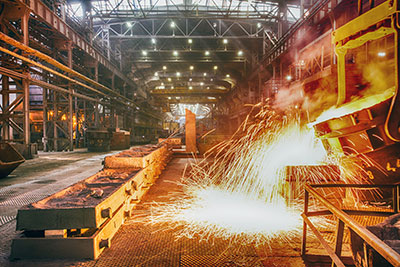Metal cutting

Metal cutting is an operation in which a cutting tool, for example a chisel, removes excess layers of metal from the preform or cuts it into pieces. Cutting is used when already machining the workpiece is difficult to perform. Produce it in a vice on an anvil or on a plate, using a metal hammer, a "kreuzmeysel", a metal chisel, a blacksmith's chisel and sledge hammers. The cutting can be vertical and horizontal. It differs in the location of the chisel during the operation. Vertical metal cutting is performed on an anvil or on a plate. The chisel is exposed vertically, and the material for chopping is laid on the anvil or slab horizontally. Horizontal felling is done in a vice. The back edge of the chisel, at the same time, is set relatively to the plane of the jaws of the vise approximately horizontally, at an angle of 5 °, but no more.
The main cutting tool is a chisel, and a shock hammer. The chisel is made of carbon tool steel. There is such a chisel from three parts: working, shock and medium. Working or cutting part of wedge shape. The angle of sharpening is measured by the hardness of the material being processed. The shock is performed tapering upward, its apex is rounded. And the middle part is what the chisel is held for during the work.
For the most common materials, the following taper angles are recommended: 70 ° for hard materials (such as cast iron), 60 ° for materials with medium hardness (steel), 45 ° for soft (brass, copper), 35 ° for Aluminum alloys.
For metal metal cutting, mass hammers are used: 400 g, 500 g, 600 g and 800 grams. Handles for hammers are made of viscous and hard wood, like birch, oak, maple and mountain ash. All handles should be oval, without any cracks and knots.
When cutting, the material is clamped to the level of the bending of the vise very firmly, so that the upper rib protrudes from the jaws by 3 or 4 mm. The first shavings are cut for the entire length of this workpiece. After, the workpiece is again rearranged, so that the rib protrudes by 3-4 mm again cut down. This sequence gradually cuts the material to the desired size. If you want to cut down immediately a large layer of metal on a workpiece with a wide area, then the product is clamped in a vice, chopped with a chisel chamfer, with the help of a "kreuzmeyselya" cut through the transverse grooves and then chopped down all the protruding faces with a chisel. Locksmith tools are sharpened on grinding machines. During sharpening, the blade of the tool becomes very hot, which means that if you go unprofessionally to this work, then a vacation can occur. If a vacation appears, then this tool loses its hardness and becomes unfit for further work.


